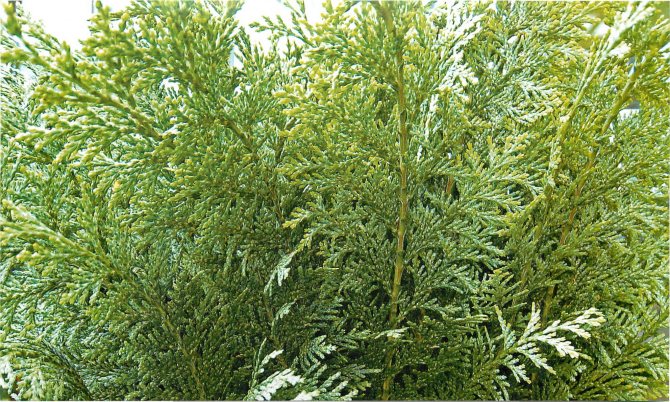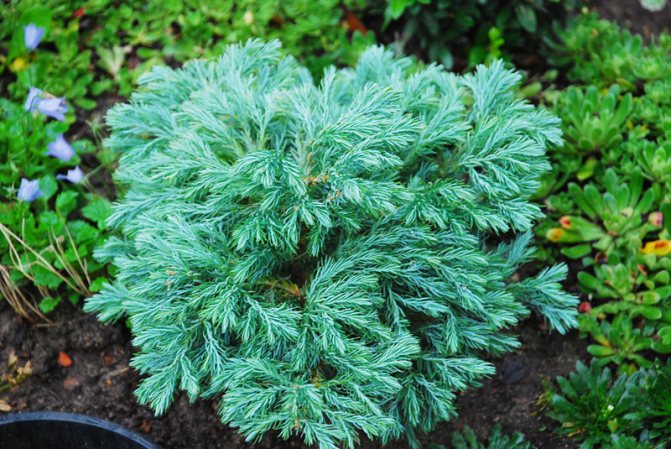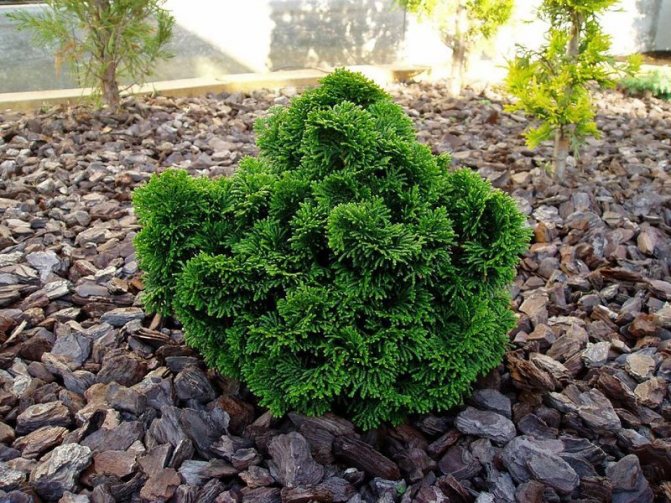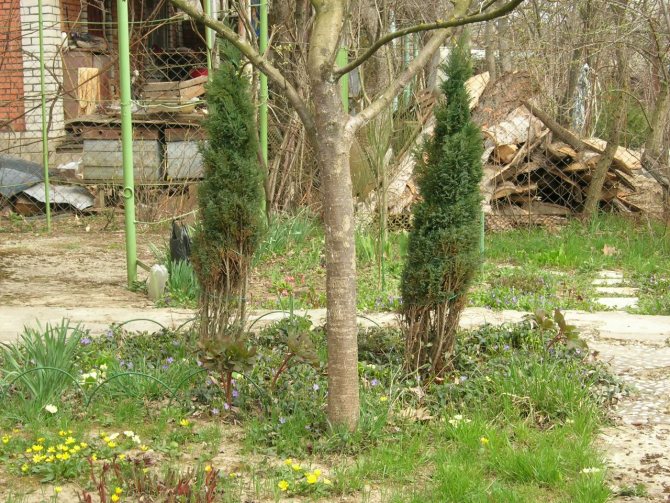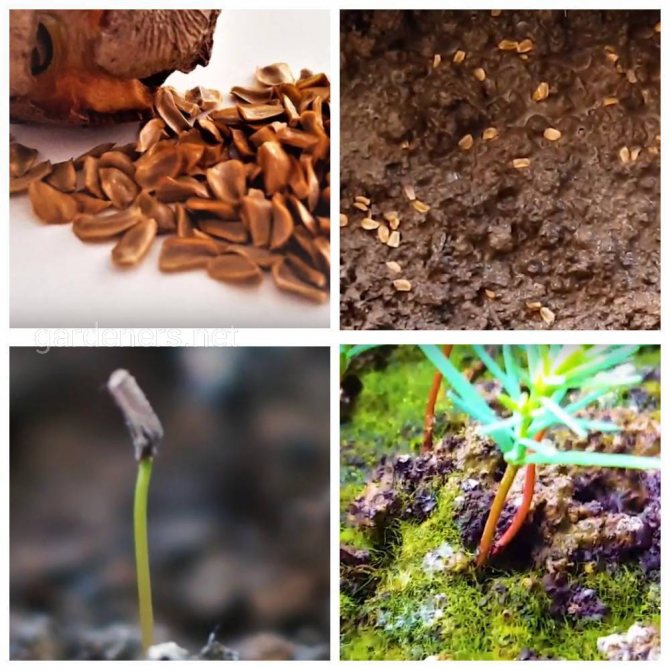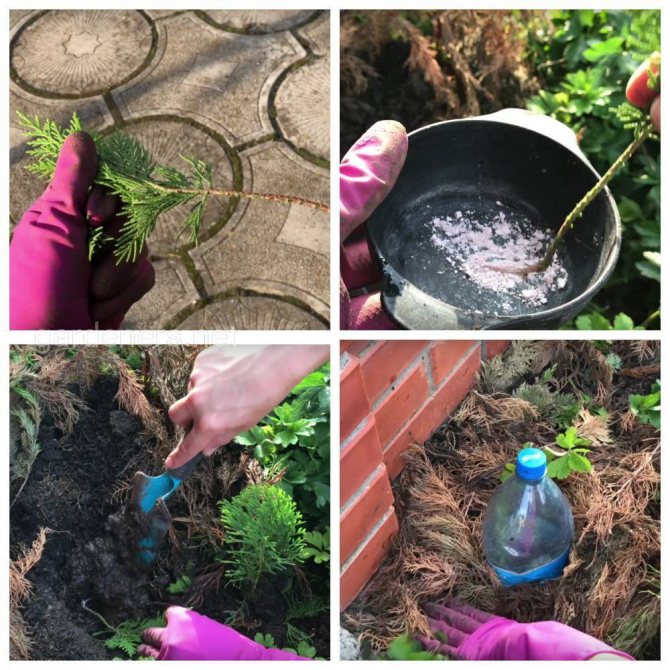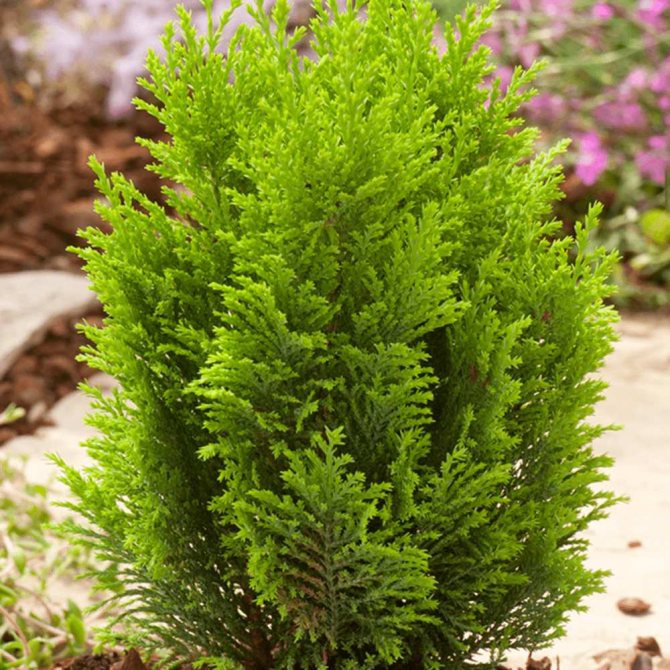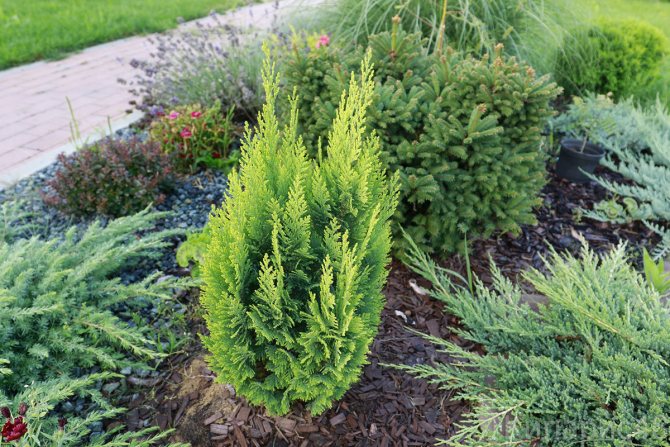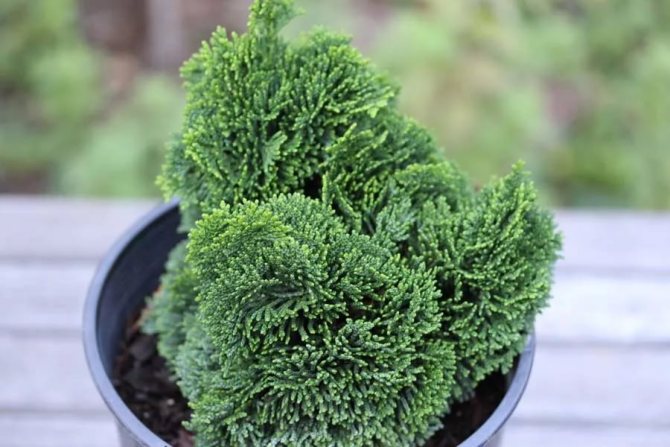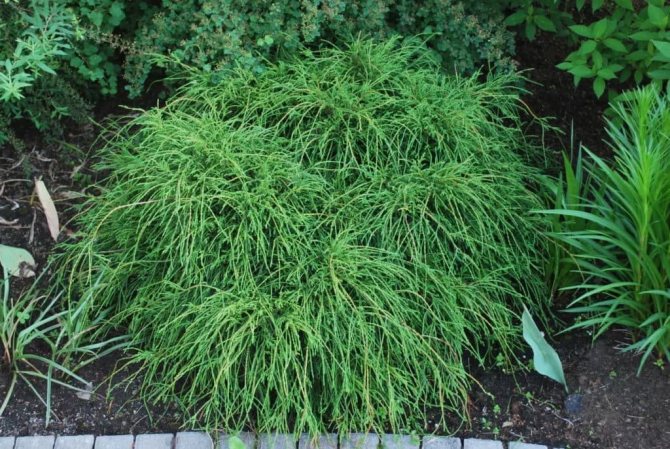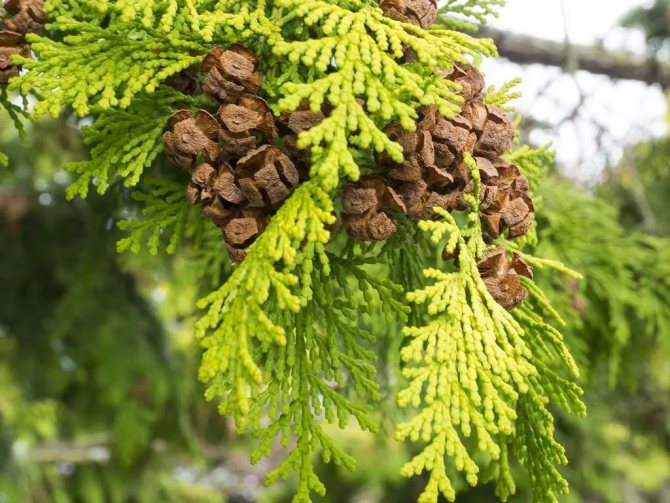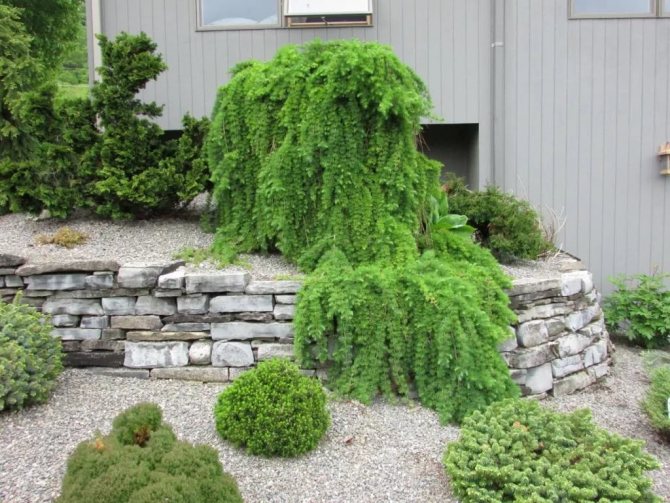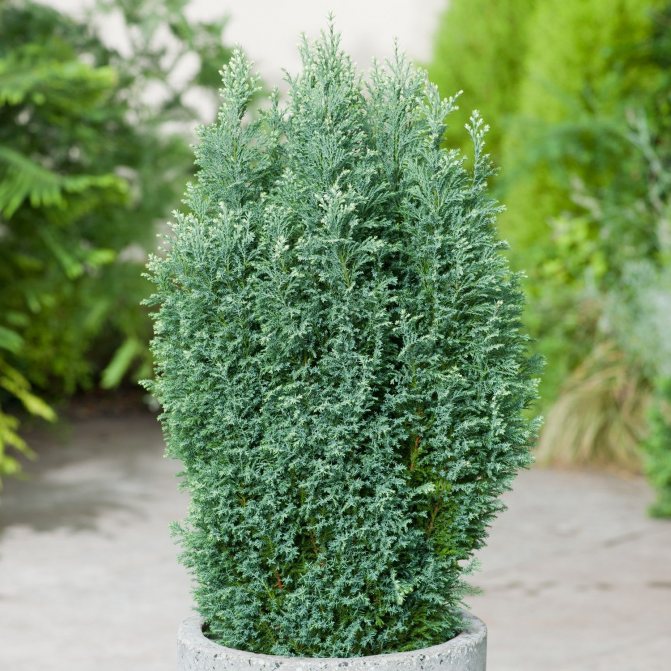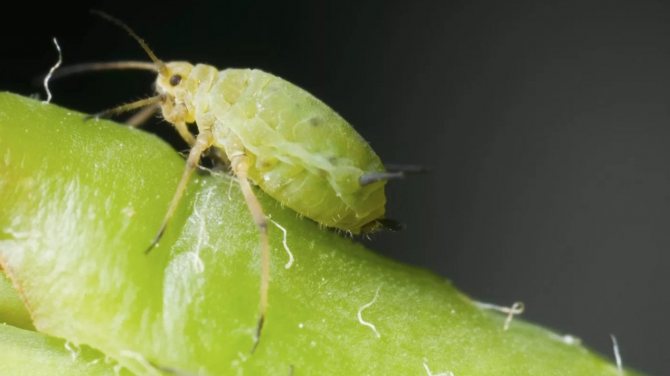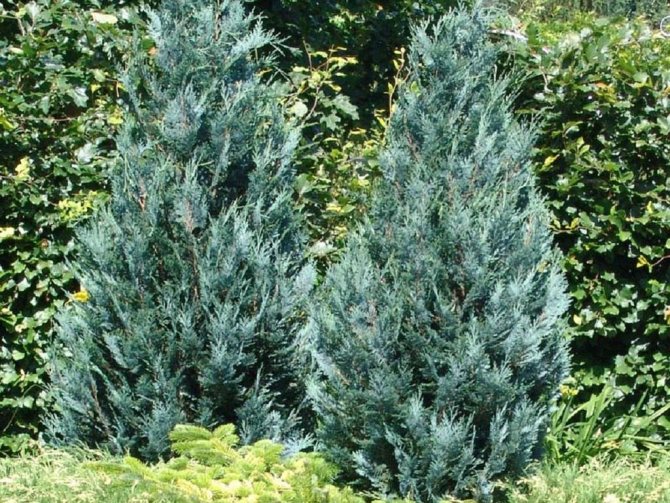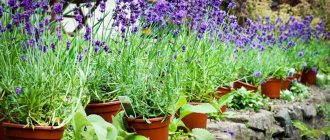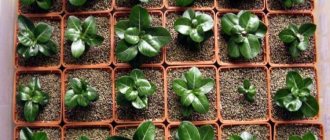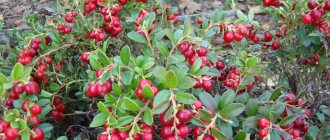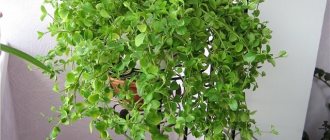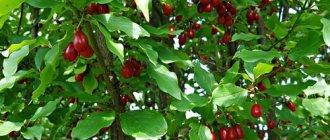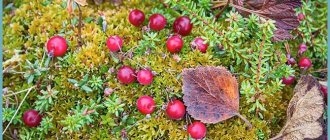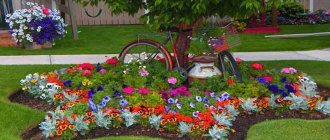Cypress (Cupressus) belongs to the genus of plants belonging to the Cypress family (Cupressaceae). All of them are evergreen representatives of the flora, which have a shrub or woody form of growth. The crown is mostly pyramidal or spreading outlines. In natural conditions, cypresses are most often found in the northern hemisphere, where the tropical and subtropical climate completely dominates. Namely, on the lands of the Mediterranean, on the Black Sea coast (in the Caucasus and in the Crimea), but you can find these examples of the green world in the Sahara, in the vastness of the Himalayas, the cypress also did not bypass the southern Chinese regions and the American continent (from Oregon to Guatemala). All species that exist today are of very ancient origin, the roots of which go back to fossil times, but the remains of such varieties can be found in the Tertiary formation. This genus (according to various scientific sources) includes from 19 to 25 varieties. The height of such representatives of the cypress family can reach 25 m. When grown at home, these parameters are much more modest, they do not exceed 2 meters. In trees or bushes, leaf plates are quite small, when the plant is still very young, they resemble needles, and when the cypress becomes an adult, the leaves acquire a scale-like shape and press against the branches, arranged in the form of tiles, laid in four rows. Each such leaf has only a free top, all of its main part is tightly fused with a twig. On the reverse side of the leaf there is a developed oily gland, which often has a sharp outline. The color of the leaves is dark green and there is a slight bluish bloom.
This pyramidal plant is monoecious and each has male or female cones. Men are called microstrobils and they have a spherical or elongated-cylindrical shape, they include a rod on which microsporophylls are located. There are varieties in which they are rounded, but in others the form is polygonal-thyroid, the placement of microsporophylls is opposite opposite. Each of them contains 3-5 microsporangia. Female cones are called megastrobils, their coverts are completely spliced with the seed scales, therefore this formation consists of a rod that covers from 6 to 10 (rarely 14) cross-placed scales called megasporophylls. Each scale carries several ovules - they are called megasporangia.
In the second year of formation, the cones ripen, they acquire an ovoid or spherical shape, and the scales themselves become like thickened multifaceted shields, which are very eccentrically attached to a plump leg. On the back of the scale, a pointed outgrowth is clearly visible, developed to a greater or lesser extent. On the underside of such a scale, the seeds are placed very closely, arranged in several rows. Each flattened seed has a narrow winglet. The embryo has a pair of cotyledons, in rare cases 3-4 units can be formed.
It is important to note that, in comparison with other representatives of conifers, cypress adapts quite well to life in a room setting.It happens that unknowing people confuse a cypress with a Cypress tree (Chamaecyparis) very similar to it, only the needles of the latter with a light greenish color scheme without a blue tint. Of course, this is not a big problem, since you need to take care of both "green pets" according to similar rules. However, it is worth noting that it is not so easy to grow a cypress in your home - it is quite capricious and requires close attention, but it's worth it. Consider the basic requirements for plant maintenance.
Features of growing cypress
The best decoration of your suburban area will be a cypress tree, if you want to decorate the territory simply and inexpensively. To plant a cypress tree, choose a place where the shadow will fall, but if you have chosen trees with yellow needles for planting, then a place under the sun will do - this will give the tree a golden hue.

Photo of a growing cypress
Almost all varieties of this tree need shade and a calm place. - here the supports with climbing plants, described in the article, can come to the rescue. It is desirable to plant it on higher elevations.
Before you start growing cypress in your area, fertilize the ground with minerals and nutrients: this will not only help the tree grow faster, but also prepare it for wintering.
After the pit is ready, add about 7 kg of fertilizer or other type of mineral compost designed specifically for feeding conifers. If you decide to plant a cypress tree in the summer in extreme heat, do not forget to water and spray abundantly once a week.
We grow seedlings at home
There is an opinion that cypress can be grown in a generative way, that is, by sowing seeds directly into open ground. I think it is wrong. It is much safer to grow seedlings at home. If the seeds are sown outdoors, they will germinate very slowly. This is the main problem.
The best method is to germinate the seeds in a pot. For cypress, I recommend choosing clay soil with a neutral pH. You can use a disposable container that is easy to cut. An ordinary plastic bottle, plastic pot is suitable.
If necessary, you will need to transplant the cypress into a larger container. So, the landing is carried out as follows.
- The seeds are placed at a depth of 1 mm, covered with damp paper on top.
- The container is placed on the windowsill.
- After a few days, the seeds germinate. They are watered very sparingly.
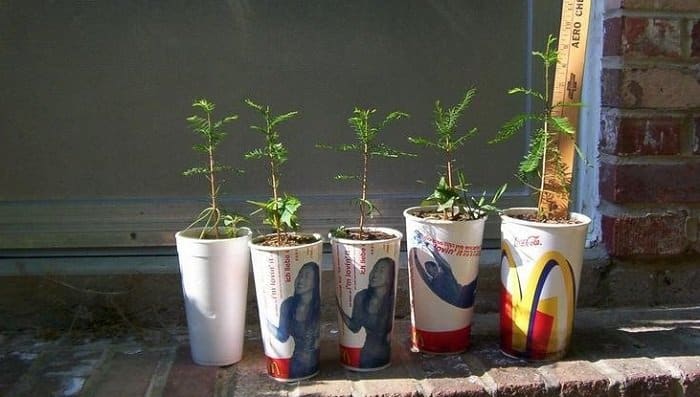

Waterlogging of seedlings or keeping in dry conditions is unacceptable. The soil should always be slightly moist. Add water as the substrate dries. Once you see the seedlings, transplant them into larger containers.
On average, seedlings appear in 45-60 days. If they grow well, then the seedlings are ready for planting in open ground. When replanting a plant, I recommend using the same potting mix. The picking of cypress seedlings is carried out together with an earthen clod. The procedure should be performed as carefully as possible!
The hardened seedlings are suitable for planting in open ground. It is very important to choose the right place for the cypress, and also to form a planting pit. After planting the cypress outdoors, compact the soil and add water to the soil.
Types of cypress
There is in nature 7 types of cypress... The most popular ones are:
- Pea - a tree, the country of origin of which is Japan, reaches a height of 30 m. The branches of the cypress tree Bulevard, as it is also called, are wide, reddish in color, cones on the branches are up to 6 mm in diameter and have a yellowish color.
- Lawson's cypress - its homeland is North America, the tree has a height of 60 m.In our climate, it grows up to 3 m, the bark is brownish, the branches are short in the form of a cone, needles with a greenish tint and blueness. There is another variety of the variety - cypress Elwoodi.
- Yellow native to the Pacific coast of North America, has a height of 30 meters. The branches of such a tree are narrow and drooping at the ends, the needles have a gray tint, the cones grow in heaps of 5 pieces each, their diameter is 10 mm. For moistening, it is recommended to use the lawn irrigation systems discussed in the material.
- Chamaecyparis - the homeland of this cypress is China, the tree grows up to 40 m high. The crown is drooping with a grayish-green color in the form of a cone. Loves moisture and sun, takes root well in pots.
- Tuyuid - this tree comes from the eastern region of North America. The tree grows up to 25 meters, the bark is brownish-yellow, the branches are cone-shaped, bluish-green in color.


Nutkan variety
- Nutkansky - outwardly similar to Lawson's cypress, but has more shaped scaly leaves, blooms in spring, grows from Alaska to California.
- Dull cypress - originally from the North of Japan, reaches 30 meters in height. The trunk is 2 m in diameter, the bark is reddish with a brown tint. The branches are wide, conical in shape, the crown is dark green, and orange cones grow on the tree, 4-5 pieces per branch. It will contrast beautifully with the delicate flowers of the grown tree peony.
- Formosky Is a tree from Taiwan, its height is up to 65 meters. The diameter of the tree trunk is approximately 6 m, the crown is wide, dense, branches with a brownish-greenish color.
How to grow a cypress tree yourself
Growing cypress can be carried out using:
- seeds;
- cuttings;
- overgrown layers.
Varietal forms do not make sense to propagate by seeds, since it is impossible to find out the varietal trait of seedlings due to the immature crown, while the crown of mature trees changes. Seed cypress is usually propagated by breeders because the tree has planting heterogeneity. If you nevertheless decided on seed reproduction, then it is important to know the rules.
How to plant a cypress tree in your country house
Cypress loves partial shade, but if the plant has a yellow leaf color, then a hint: plant it in sunny areas... If the terrain for planting plants is hilly, uneven, the main thing is not to plant cypress in the lowlands, because cold air currents are most of all trapped there.
The gardener needs to carefully monitor the root collar of the plant so that it is at ground level. When the soil is compacted from rain and time, it is important that the plant is 10-20 centimeters above the level of the topsoil. Before planting a plant in a prepared hole, an earthen lump that keeps the roots together must be moistened with water so that it is well saturated with moisture.
To make rooting less painless for a newly planted or transplanted plant, it is best to use Kornevin's special remedy in a solution of 1 pack of the product for 5 liters of water: this solution moistens the lump with water, gives nutrition to the roots at the initial stage of getting used to the new substrate and avoids root decay.
Seedling care
As an ornamental plant, cypress is quite capricious. For example, it needs to be sprayed frequently, but not watered, to avoid decay. The most vulnerable part of the shrub is the root system. It takes a long time to form and requires additional strengthening. You can fertilize seedlings with a mixture for conifers about 1 time per month. Also, during transplantation, it is not necessary to deeply deepen the roots, they should be closer to the surface, so it is easier for them to assimilate nutrients.
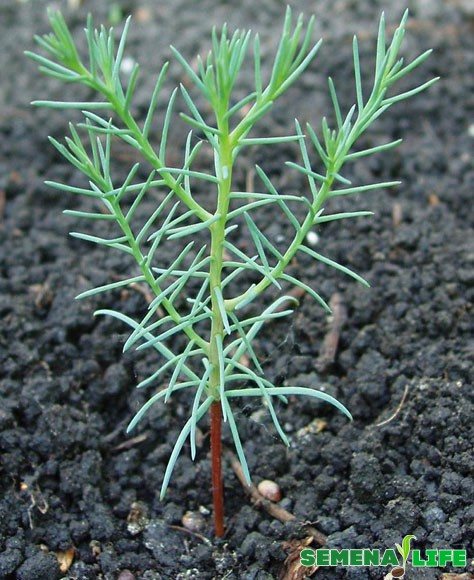

Watering and fertilizing the soil
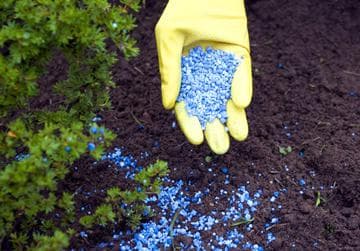

This ornamental plant requires a rich soil composition.... It is advisable to prepare the soil mixture yourself. To do this, you need to mix:
- humus - 3 parts;
- leafy ground - 2 parts;
- peat - 1 part;
- sand - 2 parts.
The acidity of the soil, optimal for the plant, is pH 4.5-5.5... In the holes prepared for the cypress, you need to put a drainage layer, consisting of a battle of red brick mixed with sand. Drainage in height should not be more than 20 cm, exactly half the depth of the hole.
The cypress soil recipe also includes 250-300 g of nitroammophos, or it can be replaced with Scotts Landscape Master or Universal Harmony.
Cypress has sensitive weak roots that are afraid of moisture stagnation... This can be avoided by using sensible watering, planting in holes with drainage, and replacing spraying with watering once-after-time. If the weather is dry in the yard, then the plant needs abundant spraying from a hose, a fountain irrigation system or from a watering can with a distributor 1-2 times a week.
During the growth period in the first year of the tree's life or after transplanting to a new place, watering can be increased a little so that the peat ball does not dry out - this is harmful for a young plant. During the rainy season, you can cover the plant or make a greenhouse for it, and in the summer sun shade the cypress with agrofibre.
Of additional care, it is also worth highlighting:
- mulching soil and loosening of the substrate - the soil is compacted after rains, so you need to push the ground with peat crumb or small pine bark scales, this layer usually does not exceed 5 cm;
- the formation of the size and shape of the bushes by trimming excess and dry leaves. Pruning is also carried out for home roses.
- for winter the plant does not need to be dug up. It is enough to tightly cover the soil under it with a layer of peat, and also spud the pea cypress with snow.
Useful Tips
As we have already found out, growing a cypress tree from seeds is not an easy task. For its implementation, only patience and enthusiasm is not enough; it is necessary to strictly follow all the rules. We will give a few more recommendations, which, according to breeders of conifers, will help to achieve the best result. First, try soaking the seeds before planting, not in plain water, but in a root or epin solution.
Secondly, be careful about the choice of soil. Of course, you can use ordinary soil, but it is better to purchase a special soil mixture. The best option would be a soil composition for conifers, which can be purchased at any specialty store.
The third trick involves using crushed tree bark as natural drainage. It can be poured onto the bottom of the box just before planting and covered with soil from above. Thanks to this, cypresses will better absorb moisture and will not suffer from an excess of it. You can buy bark from the fertilizer department or prepare it yourself (in the second case, you will need some experience in this matter, so if you are not confident in your abilities, it is better not to risk it). The last tip concerns transplanting young stock into open ground. This should be done no earlier than a year after the appearance of the first shoots.
Of course, you shouldn't put the bushes in the ground in cold weather. Focus on the climatic features of the region and remember that in some parts of Russia, cypresses, even on the street, can exist only as a potted culture.
semena.life
semena.life
As we have already found out, growing a cypress tree from seeds is not an easy task. For its implementation, only patience and enthusiasm is not enough, it is necessary to strictly follow all the rules. Here are a few more recommendations that, according to coniferous plant breeders, will help to achieve the best result: First, try soaking the seeds before planting not in ordinary water, but in a solution of root or epin.
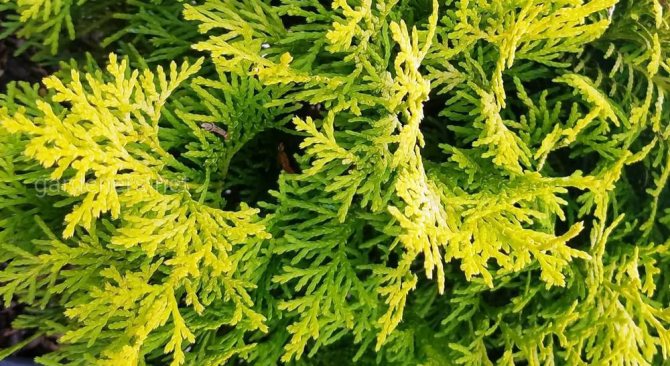

The third trick involves using crushed tree bark as natural drainage. It can be poured onto the bottom of the box just before planting and covered with soil from above. Thanks to this, cypresses will better absorb moisture and will not suffer from an excess of it.You can buy the bark from the fertilizer department or prepare it yourself (in the second case, you will need some experience in this matter, so if you are not confident in your abilities, it is better not to risk it). The last tip concerns transplanting young stock into open ground. This should be done no earlier than a year after the appearance of the first shoots.
How to deal with plant problems - diseases and parasites
The only parasites that can attack a plant are ticks and juniper beetle... The fight against ticks consists in spraying: means "Neoron" in a concentration of 500 g per liter of water. It is enough to spray once.
The protection from the bark beetle is as follows:
- spraying with Confidor maxi, 70%. Calculation: 1 g per 10 liter bucket, you need to carry out 2 treatments;
- it is possible to carry out processing with Aktara 25WG, at the rate of 1.2-1.4 g per 10-liter bucket, also two-time processing.
Landing
Planted in places with partial shade, avoiding prolonged exposure to the sun, lowlands. The plant variety is taken into account. For example, species with yellow-green needles require more light. The soil is nutritious, always with drainage, without lime.


Green cypress
- The best landing time is April. The soil has managed to warm up, the probability of frost is low.
- Prepare a pit 90 centimeters deep, 50 cm wide. Crushed brick and sand are placed on the bottom. The thickness of the drainage is 20-30 cm. The substrate is poured from turf, humus, peat, sand (3: 3: 2: 1). It is better to prepare the pit in the fall so that the substrate is peeled.
- When planting several plants, the recommended distance is at least 1 meter. More is better, because the root system grows horizontally.
- Before planting, watered with root. The seedling is placed in the center, fertile soil with nitroammophos is covered. Watering, mulching and tying up.
How landscape designers use cypress
The design of flower beds and summer cottages is obtained with the effect of Mediterranean landscapes, if you plant a cypress tree among other flowers as a green frame. It grows well both alone and in a group planting.
Cypress is very attractive for lovers of greenery and a beautiful living fence. It is quite simple to care for it, the main thing is light, watering, fertilization and protection from pests. The plant can form a small neat hedge in 2-3 years of growth.
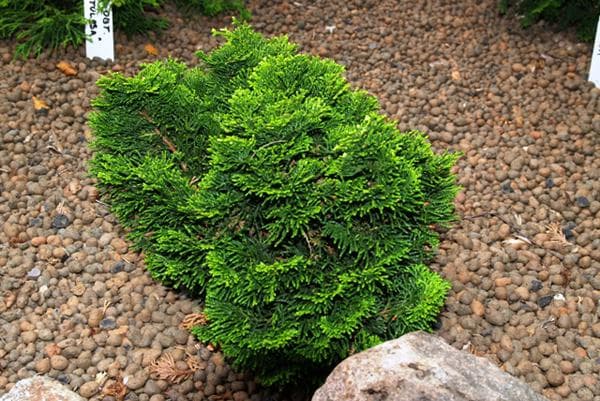

Dull cypress grown from seed
Also, a cypress grown in a home flowerpot can serve as a Christmas tree for the New Year, but the tree needs moisture and coolness. Dwarf cypress trees have a spherical shape - with their help they make bright, constantly green accents in design, when laying out complex patterns on a flower bed.
Choosing a flower in a store
When choosing an indoor cypress in a flower shop, it is necessary to carefully examine the plant, and first of all, focus on the color and condition of the needles. It should be light green with no visible changes or spots, indicating that the flower is in good condition. This fact also applies to its trunk and bark, which should have a natural shade of brown. In addition, fresh cypress exudes a light lemon scent, which can be felt if you run your palm against the growth of the needles. Old and diseased plants, as a rule, do not produce this aroma.
TIP:
pay attention to the soil in the pot - if it is too moist, there is a high risk that the roots of the flower are damaged by rot or that putrefactive bacteria grow in the substrate. Choose a plant with moderately moist soil, which will in some way indicate the integrity of the plant's root system.

